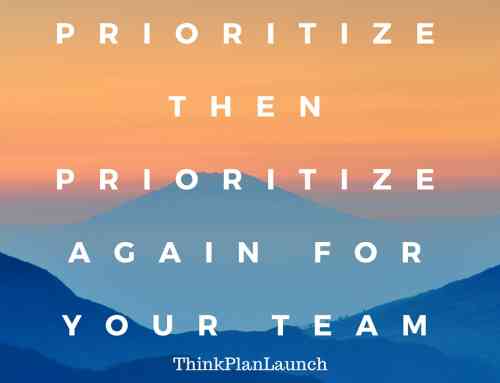Anger is a powerful emotion that can cause trouble in the office. It can happen anywhere, anytime, and by anyone including yourself. In this article we will look into anger problems which can arise in the office, it’s causes, and some solutions.
Table of Contents
Anger is natural
The first step to dealing with anger in the office is understanding what it is. It is a naturally occurring emotion. In many ways, it is a response.
The part of the brain involved with anger, the amygdala, is also involved with dealing with threats to one’s being. When stimuli engage this part of the brain, neurotransmitters and hormones are released which can cause a burst of energy needed to react quickly and forcefully.
Interestingly, the response easily bypasses normal thinking processes and produces an aggressive response instinctually. This is a natural way for humans to deal with external threats. The body responds to eliminate threats without thinking of long term consequences as a pure survival mechanism. It’s a life or death kind of response which can drive people to commit violent acts without prior intention.
Despite it’s instinctual origins, anger can be controlled. It’s force can be redirected before action can turn into serious consequences.
The prefrontal cortex is the part of the brain that exercises judgment. When anger is triggered, the amygdala reacts by sending an urge to act and the prefrontal cortex analyzes the what triggered the response and determines what level of response is justified. The amount of suppression by the prefrontal cortex can range from weak to strong which can both lead to good and bad consequences.
Being in a state of anger can take hours or even days before the body can relax to its normal state. A person who has been recently angered is more vulnerable to becoming angry again by lesser threats. The threshold lowers. This applies to other states that are outside the norm such so fatigue, stress, or pain.
One useful thing to know about the physiological effects of anger is it’s impact on memory. People who are in a state of anger will have difficulty remembering their actions while angry when compared to someone who is calm.
Triggers of anger
People are somewhat unique in terms of what sets them off. One person might not respond much when a waiter forgets to bring something they ordered while eating out for dinner. Another person might take it as an insult that attacks their entitled right as a customer and they will blow up.
What constitutes as a trigger that threatens an individual is based on their personality which includes their behavioral profile. Experiences, values, norms, and culture also play a vital role. Narcissism, both temporary and chronic also can trigger anger more frequently. Competition may influence anger when trying to survive or attain an important goal. Frustration is also a major trigger. Not every can tolerate frustration at the same level.
In an office setting, competition is guaranteed and frustration is prevalent. It’s no surprise that anger is common in the office. In fact, anger can be triggered so easily under stress that outsiders would be amazed at what can cause some one to turn red with rage.
In an office, there is probably no one who is excluded from angering others. Well, maybe except the mailman, unless bad news is being delivered.
While we could list all the specific triggers for anger, it wouldn’t be productive because it varies from individual to individual and can encompass a broad range of things that would be difficult to imagine, let alone understand.
When anger erupts
Anger, once it is triggered, can lead to a wide range of actions and consequences. In many ways, anger is influenced by one’s emotional intelligence. Anger in itself isn’t an entirely useless emotion. It causes someone to take action when they otherwise might not.
In the case of abuse, anger serves a good purpose to warn others and prevent further harm. But, what about anger in the office?
Relationships among coworkers can be productive or unproductive. Anger can often result in lines being drawn within an organization which will lead to decline in productivity. It is a classic “us” vs “them” scenario. Individuals or groups can experience offensive behaviors, which, if let alone, will turn into hatred. It can cause a rift between managers and employees, departments, teams, and individuals.
Dealing with anger should be on a manager’s list of responsibilities. While it can’t be totally prevented, it can at least be dealt with.
Anger from oneself
Whether you are a manager, employee, or leader, they way that you handle anger is your personal responsibility. We first want to look at dealing with anger individually.
The first way to tackle anger is to prevent it. To do so, I advise you to take the following steps.
Make a list of things which make you angry
If you find yourself angry at a lot of things and it gets hard to control, you can try the following.
In your spare time, make a comprehensive list of things that irritate you or contribute to your unhappiness which can result in anger. A spreadsheet works best for this task because you’ll be able to rearrange the list and make edits. You should record the level of anger something causes, the frequency of it occurring, and the source.
Use our simple Excel template
Download link: ThinkPlanLaunch_Anger_Management_v1
Deal with what makes you the angriest most
By analyzing the list you have created, you should be able to prioritize the things which make you the angriest, the most often. If a particular person is the source of much of your anchor, then you will be able to reduce a lot of occurrence more efficiently.
Some of the items on your list might be out of your immediate control, but, it doesn’t hurt to think long term and pool together the resources needed to do something about it.
Anger in a team
If you are managing a team of people, it is in the best interests of the organization to keep anger in check. It takes an active effort to root out what causes anger and how to deal with it. Likely, anger will be directed at people rather than tasks. Communication problems, other people not getting work done, and more can cause anger in the team.
As a manager, you should know your team’s work processes the most. If you don’t, take some time to figure it out. Document it even. Also, actively listen. Some people might exhibit passive aggressive behavior which will make it difficult to understand a cause of anger without asking questions.
One of the best features of SCRUM, a project management type methodology is a daily stand up. It consists of a daily 15 minute meeting where team members communicate what they did and what they are going to do (and what it will accomplish). During this time, members have an opportunity to voice their obstacles. These are the things that prevent them from working productively and can lead to frustration. It is also a good practice to take people aside and ask the same question. In many cases, what causes them frustration is a person in that very stand up.
A manager can become a mediator between individuals to help them resolve their problems. A failure to make progress might call for a new strategy for the team.
Finally, understand that people in your team will be angry. It is human nature. Helping them control that anger can really improve your team dynamics. If left alone for too long, someone will break down, quit, or do something to sabotage others.





Leave A Comment